We tested 5 of the best stem separation software tools (and the best one was free)
Stem separation can now be found in plugins, standalone apps, browser-based platforms and even FL Studio's latest version - but which option comes out on top?
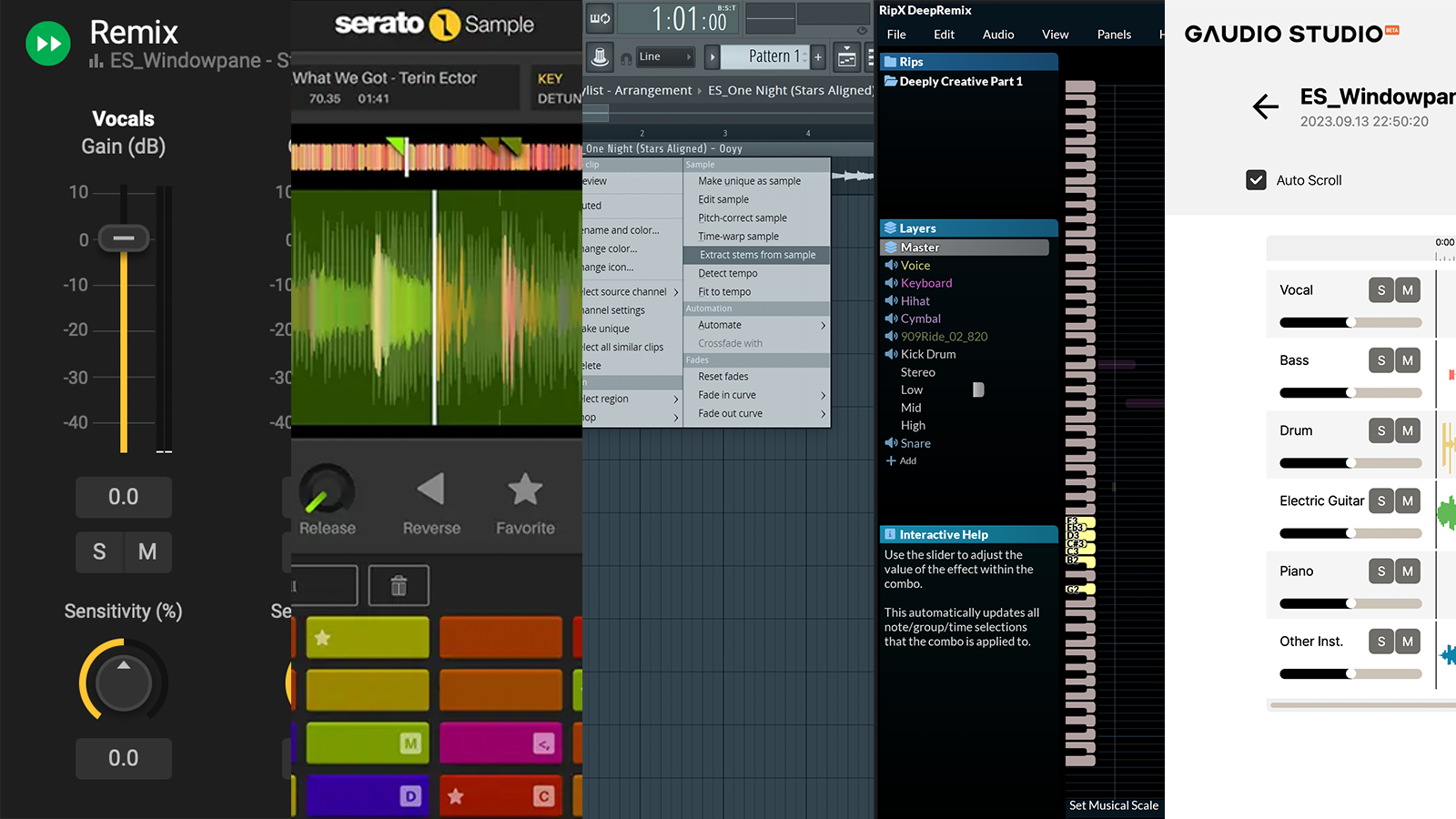
Once the domain of a handful of specialized software tools, stem separation - the ability to separate full tracks into their constituent instrumental parts - is becoming increasingly prevalent in modern music technology.
Those looking to separate stems in 2023 have a number of options, from browser-based services to standalone apps to VST plugins. In fact, some producers now won't even need to leave their DAW to separate stems: Image-Line recently announced that it will be integrating stem separation into FL Studio, and it’s likely that other manufacturers will soon be following suit.
So why would you want to use stem separation? Many producers use it to break down existing tracks to create remixes and mashups, or to sample individual elements like vocals or drums from a full mix without other instruments or sounds getting in the way.
Thanks to advances in machine learning and neural networks, stem separation software has come on in leaps and bounds
Thanks to advances in machine learning and neural networks, stem separation software has come on in leaps and bounds in recent years, and today’s AI-powered tools are capable of lifting relatively clean and highly usable stems from almost any mix. We're not yet at the point where the stems generated sound entirely artefact-free, or exactly like real stems from an unmixed project, but the results are closer than ever: take a listen for yourself below.
In this stem separation showdown, we’ll talk you through five of the most popular stem separation tools and put each through its paces, comparing the results to find out who comes out on top. We’ve got a range of choices here, including VST plugins, standalone apps, browser-based services and a DAW-based stem separation tool in FL Studio 21.2.
We’re going to run two different tracks through each stem separation tool to comprehensively test their abilities. The first track, Staffan Carlén’s Windowpane, is a breezy song that features conventional instruments, including acoustic guitar, electric guitar, bass, drums and multi-tracked vocals. The second, Ooyy’s One Night (Stars Aligned) is an electronic track with a number of synths, programmed drums and vocals. We’ve embedded the original tracks below for reference.
1. Gaudio Studio | Free
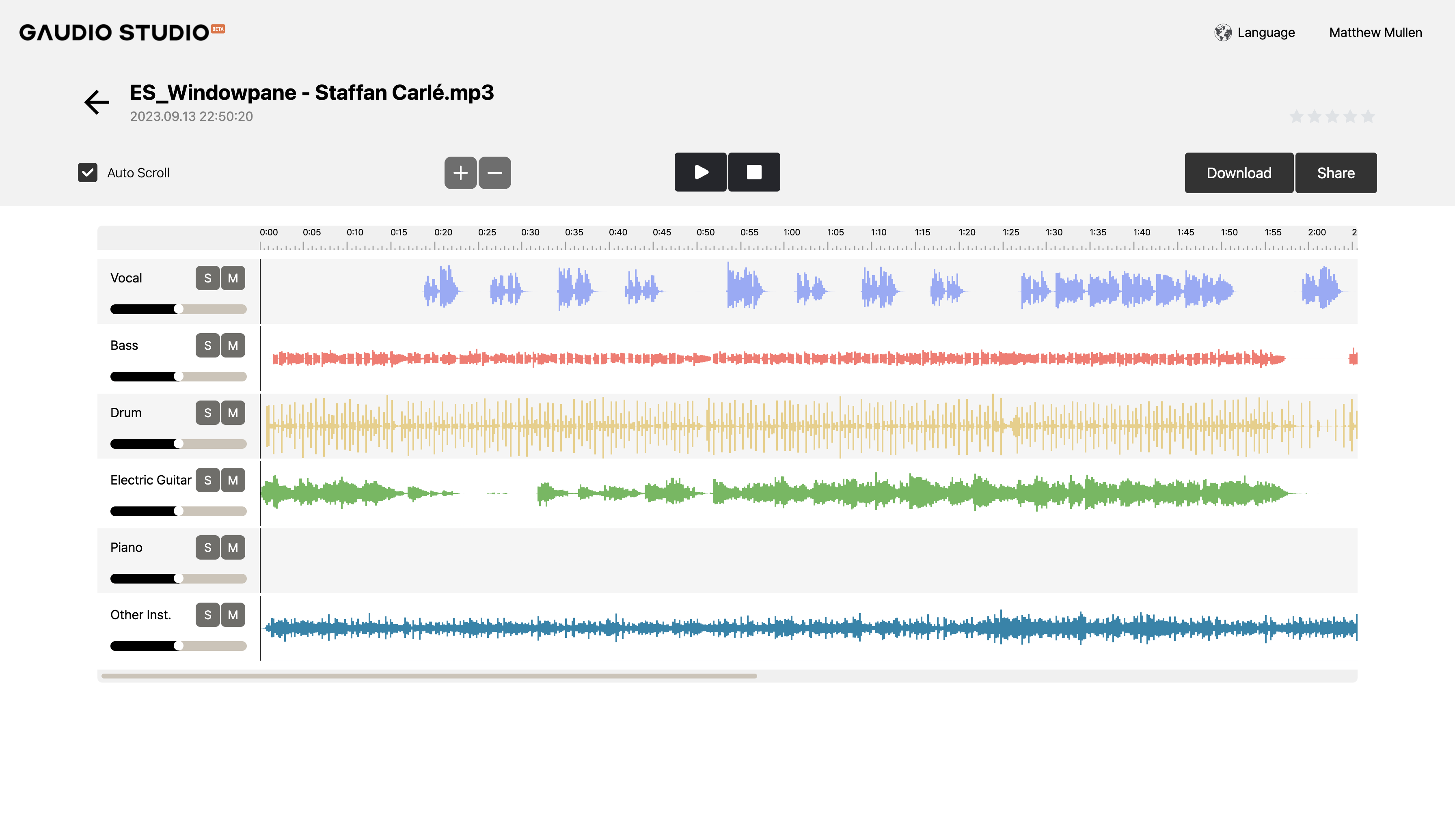
Gaudio Studio is a browser-based service that can be used by anyone to separate stems absolutely free. Though it’s in its beta version, it’s still one of the best stem separation tools we’ve heard, and excels particularly at lifting drums and vocals from mixes. Unlike programs like RipX DeepRemix or Serato Sample, Gaudio Studio offers very few bells and whistles; it’s simply a tool for extracting stems, not for doing anything creative with them afterwards.
Want all the hottest music and gear news, reviews, deals, features and more, direct to your inbox? Sign up here.
Using Gaudio Studio is as simple as logging in and dropping your audio file in for upload. There’s a maximum duration of 10 minutes per clip. You’ll be given the choice of which stems you’d like to receive from a list that includes vocals, bass, guitar, drums, piano and other instruments. At this point, you’ll have to wait for the service to process your stems, which can take a little while - we waited about 10 minutes. Once it’s ready, hit the waveform icon and you’ll be presented with the player pictured below, which will allow you to listen to your stems before you download them.
Gaudio Studio is one of the best-sounding stem separation tools we’ve tested
So how did Gaudio Studio do? The results are impressive. On Windowpane, Staffan’s multi-tracked vocal sounds decent, though some artefacts are audible on the very end of the vocal’s reverb tail. The guitar stem sounds a little wonky in parts, but the drums came out beautifully, sounding mighty crisp - the stem could probably pass for a clean drum loop found in a sample pack. Gaudio has grouped the percussion and acoustic guitar into an ‘other instruments’ stem that sounds a little off in parts, though it picks out the strummed acoustic guitar chords nicely.
On the electronic track, One Night, Gaudio Studio fared equally well, confidently picking out the heavily processed vocal lines, though in between each phrase there were some ghostly half-vocals that may need cleaning up. The track’s synth bass stem has come out a little noisy, most likely because Gaudio’s algorithm is trained to pick out electric bass guitar as opposed to synth bass.
One Night's drums have come out nicely, and Gaudio Studio has even managed to lift drum fills out with ease. While the track featured no guitar or piano, Gaudio has separated the track’s synths and FX and grouped them into a singular ‘other instruments’ stem. If we had one criticism, it’s that we’d appreciate the ability to separate these electronic sounds further into their constituent parts, but this isn’t something that any of our stem separation tools are currently capable of. Overall, Gaudio Studio's stem separation abilities make it a great choice for anyone looking to separate quality stems without shelling out for paid-for options that offer additional features and functionality.
Score: 8.5/10
2. Serato Sample 2.0 | $149
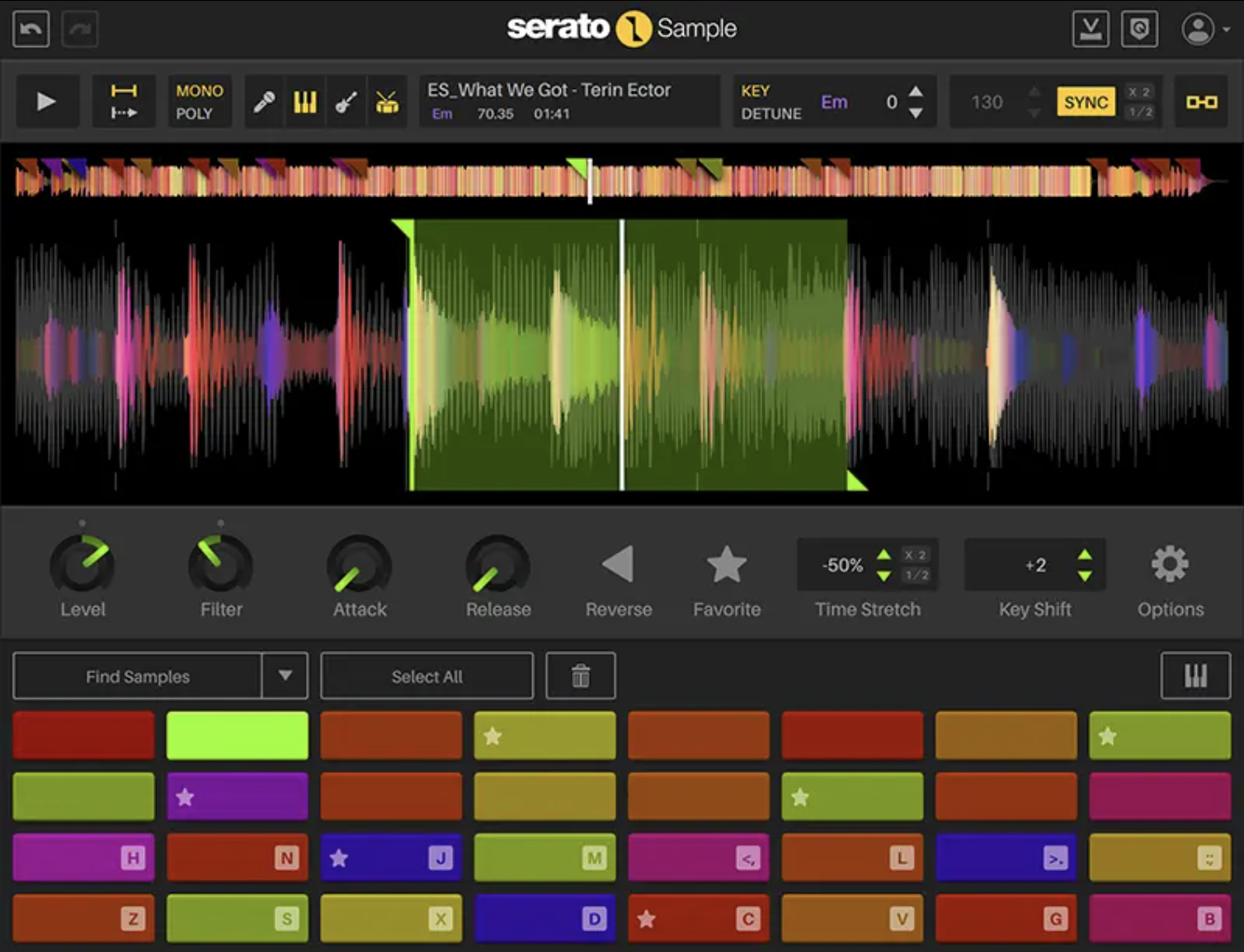
Serato Sample 2.0 is an updated version of Serato's Sample plugin that was released just a few weeks ago. As far as we know, it’s the first tool of its kind to bring sampling and stem separation together into a single plugin. The combination makes perfect sense - most of us separating stems will be doing so in order to sample those stems after the fact. Sample does way more than just stem separation, though; you can chop up, time-stretch and pitch-shift audio to create custom sample instruments from your stems that can be played via MIDI.
Open up Sample and you’ll be prompted to drop in an audio file. Once loaded in, it’ll open up a GUI complete with a waveform visualizer and a number of controls. Be mindful that Sample will automatically time-stretch your audio to fit the project’s global tempo.
Sample’s separated stems sound a little less clean than those produced by other tools we’ve featured here
If you’re looking to separate stems, the icons you’ll need to know about can be found in the top left hand corner. These represent the four stems that Sample will create from any audio file: vocal, melody, bass and drums. Select any combination of your choosing and the relevant stems will be audible when Sample is triggered. As far as we can tell, there’s no easy way to instantly export these stems as audio files, which is a little frustrating.
Sample is a decent sampling plugin, but it’s the stem separation that sets it apart. If you’re looking for an end-to-end solution that won’t just provide you with stems, but will also help you work with them after the fact, this is a worthy option to consider. But aside from its bells and whistles, how does Sample’s stem separation fare against the other contenders we’ve tested?
On first listen, Sample’s separated stems sound a little less clean than those produced by other tools we’ve tested. The vocals, on Windowpane in particular, don’t match up to those produced by Gaudio Studio, and have a slightly tinny edge to them. The snares in the Windowpane drum stem also have an unpleasantly digital sheen.
The melody stem sounds decent, though, and picks out the guitar in Windowpane nicely, while the drums in the One Night stem sound punchy with fantastic low end. Though not as clean as other stems we’ve heard, all of these would work just fine for sampling purposes; exactly what the plugin is made for.
Score: 7/10
3. Acon Digital Remix | $49
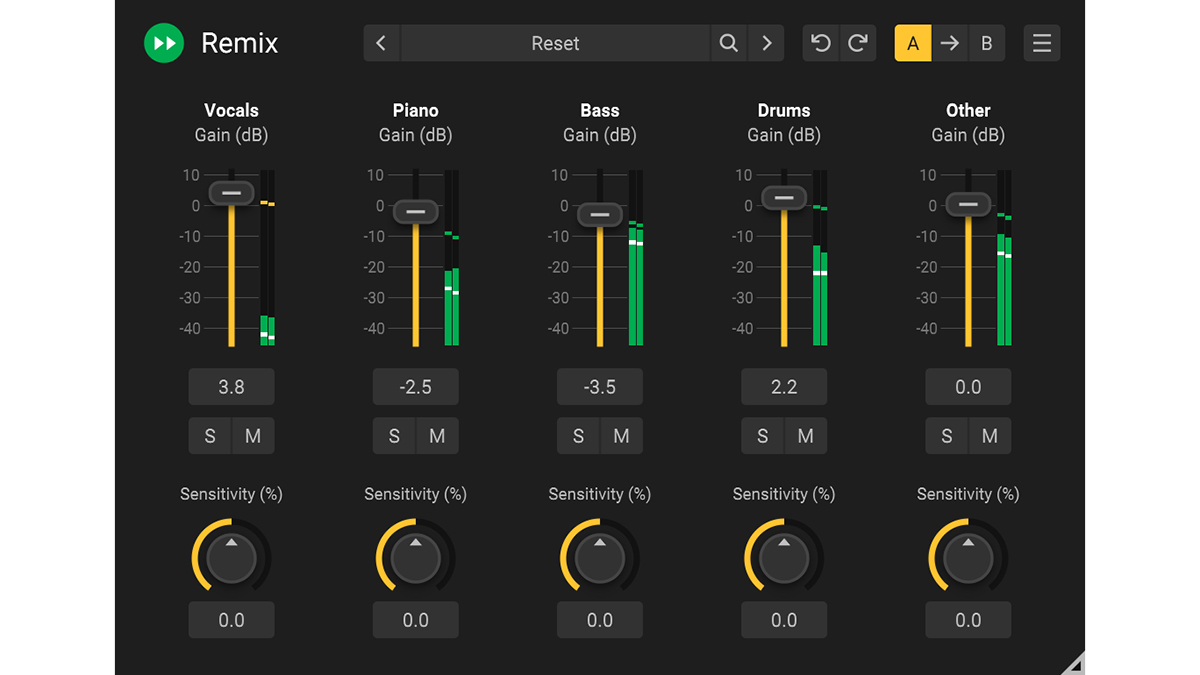
Acon Digital says that its Remix plugin is the first tool of its kind that’s capable of separating stems in real-time: considering it can take DeepRemix up to 20 minutes to process stems, that’s pretty impressive. Unlike Serato Sample, which is a virtual instrument plugin that separates stems to be triggered as samples via MIDI input, Remix is an audio effect that processes incoming audio as it receives it. Both are plugins, but each takes a unique approach to stem separation within the DAW; which you choose will depend on your preferred way of working with samples.
Stick Remix on an audio track in your DAW that contains the track you want to separate, open it up and you’ll be presented with five faders that correspond to each stem: Vocals, Piano, Bass, Drums and Other, which groups together all remaining instruments. You can mute or solo each stem or adjust the volume to create a new mix. Hit play and Remix will filter out the stems you’re after accordingly: if you want to work with each stem as its own audio file, simply bounce the resulting audio out of your DAW.
Remix doesn’t offer the kind of sampling capabilities that Serato Sample does, nor does it deliver the audio editing power of DeepRemix
Remix doesn’t offer the kind of sampling capabilities that Serato Sample does, nor does it deliver the audio editing power of DeepRemix; it seems squarely aimed at those who want to get their stems quickly with no fuss. Interestingly, though, Remix is equipped with Sensitivity controls for each stem, something not offered by any of our other contenders. This seriously useful feature fine-tunes the underlying algorithm’s sensitivity when picking out each stem, letting you dial in the optimum balance between unwanted artefacts and spill from other instruments.
So how does it sound? We found Remix’s stem separation to be lacking when compared to the other options we've tested, especially when it came to bass frequencies: the Windowpane bass stem sounds noticeably woolly compared to DeepRemix’s version, while the One Night bass stem failed to pick out the synth sound’s sonic character. We can hear faint vocals in the background of both tracks’ drum stems, though this kind of bleed can be avoided by adjusting the Sensitivity control, which we had set to its default amount.
The vocal stems are acceptable, although there’s some issues with dropouts and spill from the drums, and they sound a little too artificial for our liking. However, it’s important to remember that unlike our other contenders, Remix is separating stems in real time. Keeping that in mind (along with Remix’s budget-friendly RRP) these results aren’t bad at all.
Score: 6.5/10
4. Hit’n’Mix RipX DeepRemix | $99
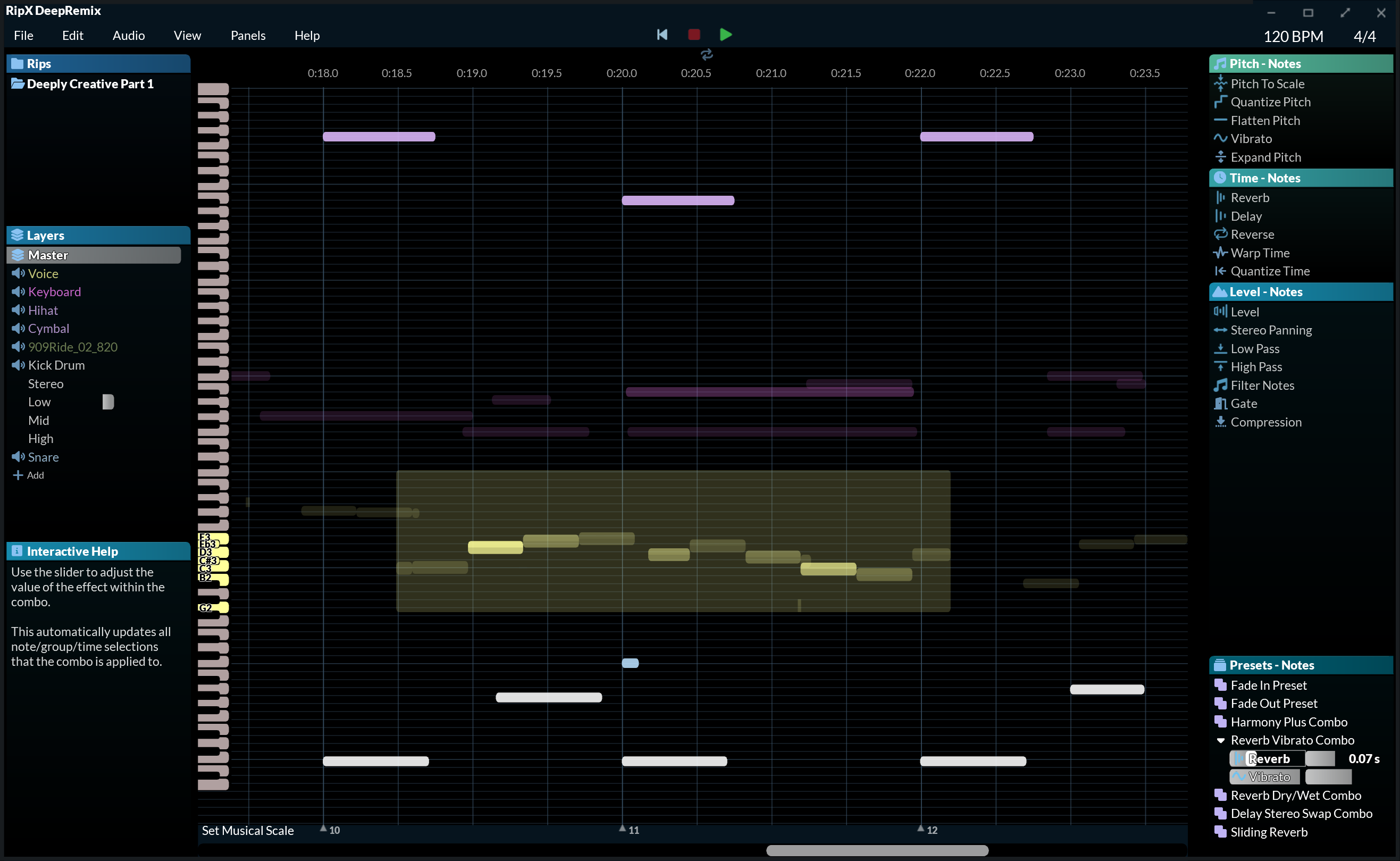
If you’re somebody that wants to not only separate stems, but manipulate them creatively afterwards, RipX’s DeepRemix is worth a look. The clue is in the name: DeepRemix is also a powerful standalone audio editor and remixing application.
Once your stems are separated, they’re displayed in a Piano Roll-style editor which allows you to treat the audio of each stem in the same way you would treat MIDI notes, muting or soloing each stem, chopping them up, rearranging and even pitch-shifting them within the context of the original track. You can even export stems as MIDI files. Upgrade to DeepRemix’s big brothers DeepCreate or DeepAudio and you’ll be blessed with an even more advanced set of tools and the ability to open the software as a plugin in your DAW.
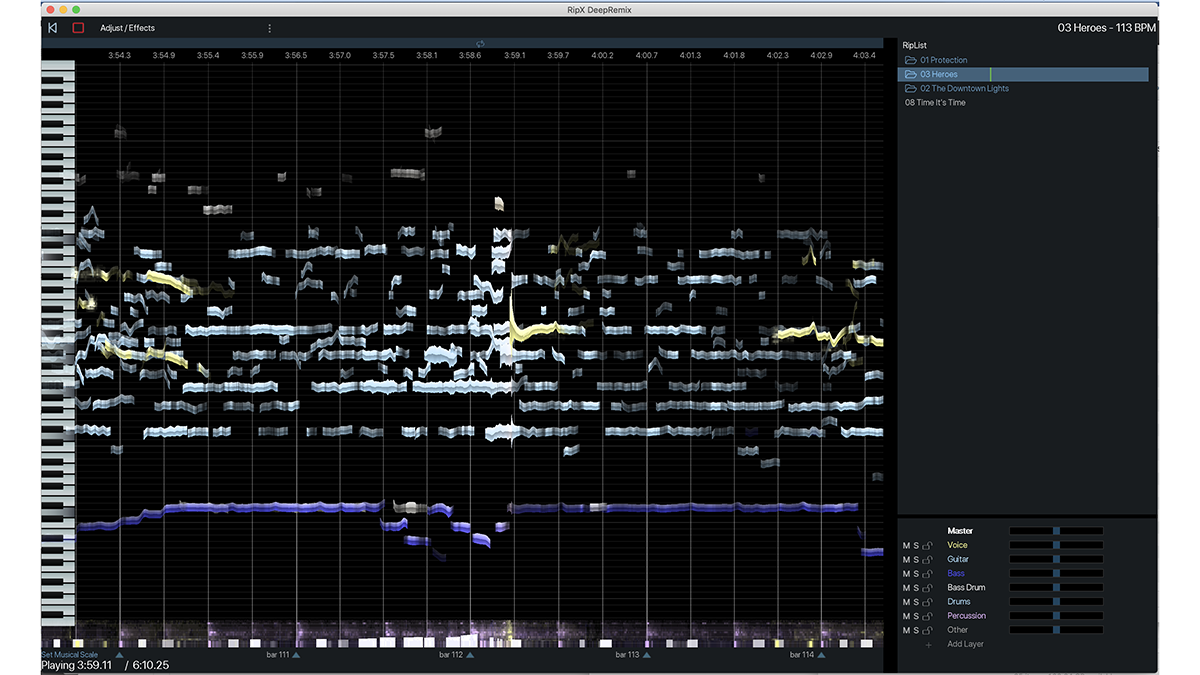
Aside from its audio editing capabilities, DeepRemix is an excellent stem separation tool and produces some of the best stems we’ve heard from software of this kind. Separation is as simple as dropping an audio file into the program and tick the boxes corresponding to the stems you’re after. DeepRemix will create individual stems for vocals and bass while also grouping together drums and percussion and 'other sounds and instruments'. You can choose to separate guitar and piano or group these together in one stem. If you just want DeepRemix to provide you with stems so you can take the audio elsewhere, check the Save Stems Only box. Processing takes a little while, and waiting times can be up to 20 minutes.
DeepRemix’s stems sound impressive, even compared to some of our stronger contenders. Stacked up against Serato Sample's, they sound fuller and brighter with a touch more presence. The quality on the Other Instruments stem for Windowpane, which has picked out the guitars, sounds particularly impressive, but the snares in the Drums stem leave a little to be desired on the fidelity front. Vocals are always the most important test of a stem separation tool’s abilities, and DeepRemix has handled ours well. While the stems aren’t entirely artefact-free they sound great and would certainly be usable for sampling and remixing.
Score: 8/10
5. FL Studio 21.2 | $99 - $499
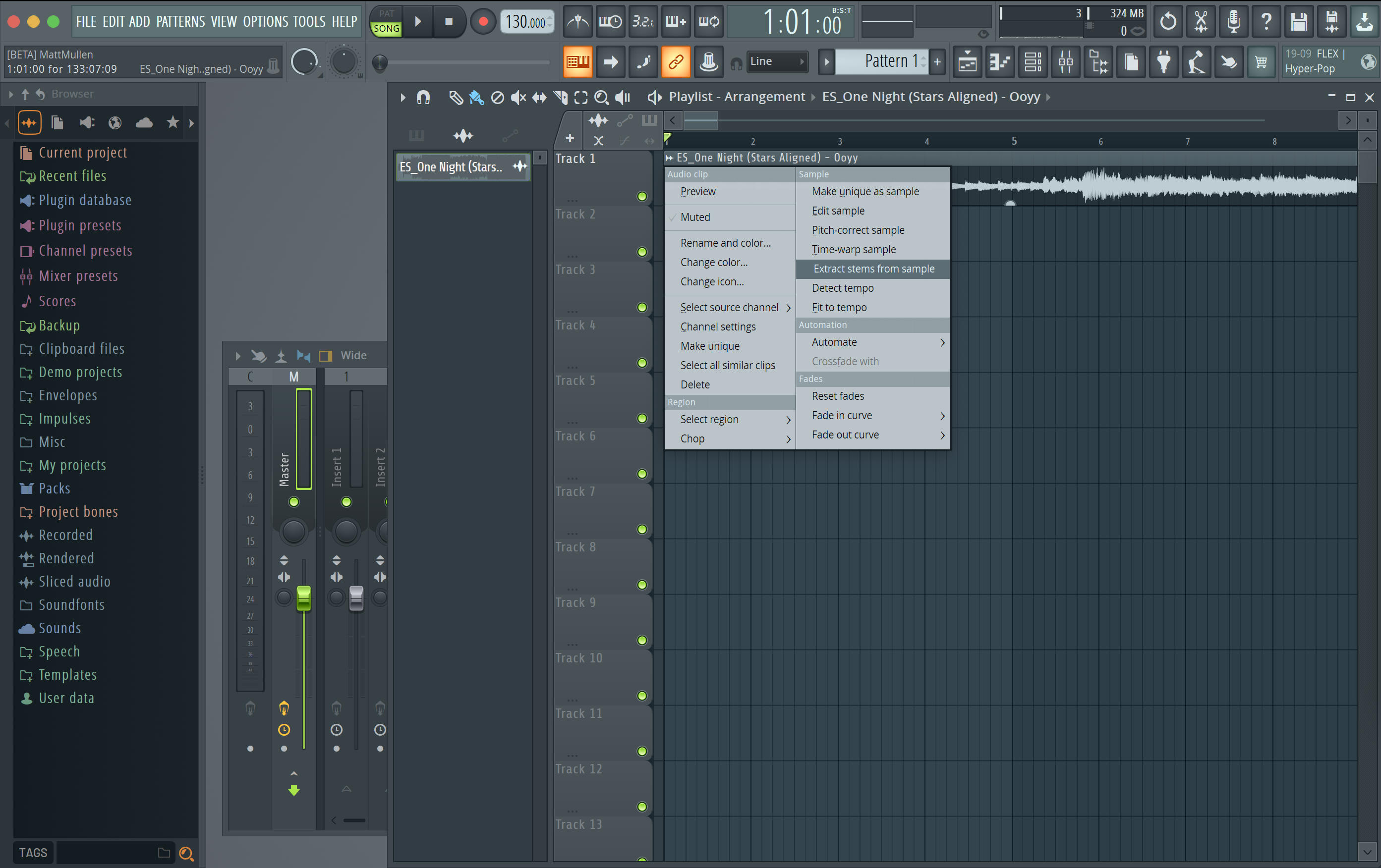
Earlier this month, Image-Line announced that version 21.2 of FL Studio would give users the ability to separate stems from within the DAW. Making it the first DAW to offer this kind of capability, FL’s upgrade was widely lauded as something of a game-changer, not least because Image-Line also added AI-powered automated mastering in the same update. The 21.2 Beta is now available to all FL users, and we’ve put the software’s stem separation abilities to the test.
The stems produced by FL sounded on point, standing up well compared to the results of the other tools we’ve tested
Accessing stem separation in FL is as easy as hitting the menu icon in the top-left hand corner of an audio clip and selecting Extract stems from sample. You’ll be asked to specify which stems you’re after and given the choice of drums, bass, instruments and vocals - unlike other tools here, there’s no option to separate guitar and piano individually. The software took about 10 minutes to separate each of our tracks. It’s not the quickest stem separation tool we’ve tested, but it does have the obvious advantage of being embedded within the DAW. If you’re an FL Studio user that wants to separate stems, that’s going to be a real time-saver.
The stems produced by FL in our tests sounded largely on point, standing up well when compared to the results of the other tools we've tried. The vocal stems sounded solid, with the Windowpane vocal coming out noticeably better than the One Night vocal. As was the case with Acon Digital Remix, the bass in both bass stems came out a little woolly and muffled, despite the low-end in the drum stems (One Night especially) retaining some punch and clarity.
The acoustic and electric guitars from Windowpane were picked out nicely in the instruments stem, sounding present and relatively clear, though FL struggled to isolate the strummed acoustic guitar chords in the sections that the electric stopped playing. The One Night instruments stem was a little garbled, though it’s understandable that it would be more difficult for the algorithm to separate layered synth sounds than the conventional instruments that it’s likely to have been trained on. Overall, a respectable effort.
Score: 8/10
Winner: Gaudio Studio
Who'd have guessed it? The winner of our grand stem separation showdown is actually the only free option we've tested: Gaudio Studio. This verdict comes with a caveat, though. While Gaudio Studio narrowly edged past the competition when it came to the quality of the stems it produced (and its lack of a price tag) it was by far the least versatile choice in terms of additional features and functionality.
If you're somebody that wants to chop up stems and play them with a sample instrument, you'd be better off using Serato Sample, and if you want to manipulate stems to create new sounds, then DeepRemix may well be the choice for you. If you're an FL Studio user, taking advantage of 21.2's stem separation is a no-brainer, or if you're simply strapped for time and want real-time stem separation at a fair price, Acon Digital Remix is certainly worth a look. All of the options we surveyed have something going for them - all that's left is to decide which is right for you.



I'm MusicRadar's Tech Editor, working across everything from product news and gear-focused features to artist interviews and tech tutorials. I love electronic music and I'm perpetually fascinated by the tools we use to make it.










